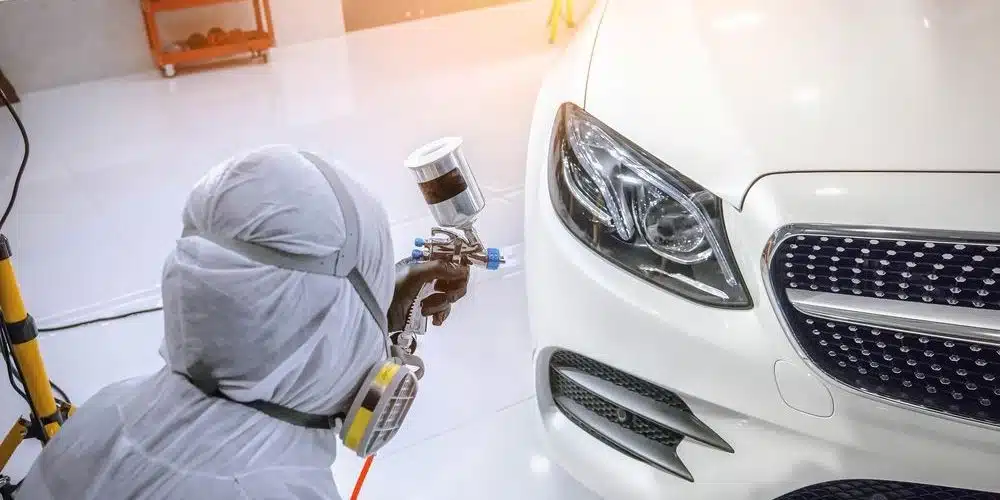Introduction
Every car owner knows that a vehicle is more than just a mode of transportation; it's an extension of one's personality, a symbol of freedom, and sometimes, even a prized possession. However, wear and tear can take a toll on its appearance, leading to unsightly scratches, dents, and faded paint. That’s where the magic of expert auto painting techniques comes into play. In this Hop over to this website comprehensive guide, we will explore how you can transform your vehicle from dull to dazzling through effective auto painting solutions.

From Dents to Dazzle: Reviving Your Vehicle with Expert Auto Painting Techniques
Auto painting is an art form that requires both skill and knowledge. It’s not merely about slapping on a fresh coat of paint but understanding the nuances of different auto paints, knowing when to perform auto collision repairs, and recognizing the right conditions for applying paint. Whether you've had an unfortunate run-in with a shopping cart or your car has lost its luster due to sun exposure, reviving its shine is possible.
Understanding Auto Paints: The Foundation of a Great Finish
Types of Auto Paints
When it comes to auto paints, there are several types available in the market. Each type offers unique benefits and aesthetics:
- Acrylic Lacquer: Known for its high gloss finish and ease of application. Acrylic Enamel: More durable than lacquer but requires longer drying times. Base Coat/Clear Coat: A two-step system that provides depth and protection. Urethane: Highly durable and resistant to chemicals but can be challenging to apply.
Choosing the Right Paint for Your Vehicle
How do you choose the right paint? Consider your vehicle's current condition, color preferences, and whether you want to retain factory specifications or go for something unique.
The Importance of Professional Auto Body Shops
What Does an Auto Body Shop Do?
An auto body shop specializes in repairing vehicles after accidents or damages. This includes everything from minor scratch repairs to major collision restoration. They utilize specialized tools and techniques that ensure every job meets industry standards.
Why Choose Experts Over DIY?
While DIY projects can be tempting for budget-conscious individuals, professional auto body shops possess experience and equipment that ensure quality results. For instance, they’ll have access to industrial-grade tools that are often necessary for achieving a flawless finish.
Preparing Your Vehicle for Painting
Assessing Damage Before Painting
Before diving into the painting process, it’s essential to assess any existing damage. Is it just surface scratches, or do you need extensive auto collision repairs?
- If it's only cosmetic damage like scratches or fading, spot repair may suffice. For deeper dents or structural issues, you'll need more comprehensive repairs.
Cleaning and Prepping the Surface
Preparation is key! Thoroughly wash your vehicle using soap designed for automotive use. Follow these steps:
Remove all dirt and debris. Sand down any rough areas. Use masking tape to protect areas not being painted.Techniques in Auto Painting: From Dents to Dazzle
Spray Painting Techniques Explained
One common technique used in auto painting is spray painting. Here’s how professionals execute this technique:
Use high-quality spray guns designed for automotive finishes. Maintain consistent distance from the surface while spraying. Apply multiple thin coats instead of one thick layer.The Role of Clear Coats in Enhancing Durability
After applying the base coat, a clear coat acts as a protective layer against UV rays and debris while adding depth to your vehicle's color.
Understanding Color Theory in Automotive Finishes
Choosing Colors That Suit Your Style
Selecting the right color isn't just about preference; consider factors like resale value and regional climate when choosing your hue.
Color Matching Techniques for Repairs
If you’re only repairing damaged sections rather than repainting entirely, matching colors accurately becomes essential—this often requires skillful blending techniques by professionals at car body shops.
Caring for Your Newly Painted Vehicle
Initial Care Post-Painting
Once you've revived your vehicle with expert auto painting techniques:
- Avoid washing your car for at least 30 days Park away from direct sunlight when possible
Long-term Maintenance Tips for Longevity
To keep your vehicle looking brand new:
Regularly wax it every six months. Keep it clean using gentle products designed specifically for automotive surfaces.FAQs About Auto Painting Techniques
How long does an auto paint job typically last?- With proper care, professional jobs can last anywhere from 5-10 years depending on environmental factors.
- It’s generally advisable to strip old paint down if it's peeling or chipping; otherwise, new layers may not adhere properly.
- Look at customer reviews, ask about their warranty policies on labor and materials used.
- Yes! Many auto body shops offer custom color matching services tailored specifically for your needs.
- Costs vary widely based on location and type of service but generally range from $500-$5000 depending on quality and coverage needed.
- Absolutely! They provide better durability against weather elements compared to lower-end options.
Conclusion
Reviving your vehicle through expert auto painting techniques isn’t just about aesthetics; it's about preserving value and enhancing safety through proper maintenance practices post-painting processes like auto collision repairs conducted by skilled professionals at reputable car body shops.
In summary—if you're considering giving your car that much-needed facelift—from dents to dazzle—remember that investing time into research on different types of paints available will pay off long-term! Whether opting for DIY approaches or relying on trusted experts within established local businesses—ensuring quality results should always remain priority number one!